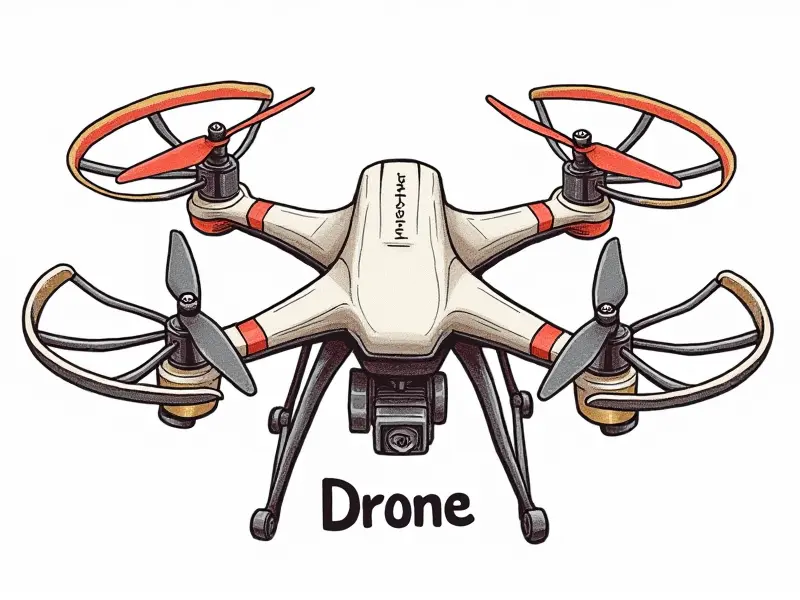What is a brushless DC motor?

Understanding Brushless DC Motors
A brushless DC motor, also known as an electronically commutated motor (ECM), is a type of electric motor that operates without brushes or commutators. Instead, it uses electronic circuits to control the flow of current and change the magnetic field direction, which in turn rotates the rotor.
Basics of Brushless Motor Operation
The operation of a brushless DC motor is based on the principle of electromagnetic induction. It consists of three main components: stator, rotor, and controller. The stator contains windings that generate magnetic fields, while the rotor holds permanent magnets or electromagnets. A microcontroller or an electronic circuit board manages these components to ensure smooth rotation.
Advantages Over Traditional Motors
Brushless DC motors offer several advantages over traditional brushed motors:
- No Wear and Tear: Unlike brushed motors, brushless motors do not experience wear from friction between brushes and commutators. This results in longer lifespans.
- Efficiency: Brushless DC motors are more efficient due to the elimination of energy losses associated with brushes and commutator resistance.
- No Emissions: Since there is no sparking or friction, brushless motors do not produce any emissions that could be harmful to the environment.
Benefits of Brushless DC Motors
In addition to their longevity and efficiency, brushless DC motors provide several benefits:
- High Torque Output: They can deliver high torque at low speeds, making them ideal for applications requiring precise control.
- No Maintenance Required: With no brushes to replace or commutators to maintain, brushless motors require minimal upkeep.
Brushless vs. Brushed Motors Explained
The primary difference between brushless and brushed motors lies in their construction and operation. In a brushed motor, mechanical contact is made through brushes and commutators to switch the current direction, whereas in a brushless motor, this switching is done electronically.
DIY Guide to Brushless Motor Setup
If you're interested in setting up your own brushless DC motor for DIY projects or hobbyist applications:
- Select the Right Components: Choose a compatible ESC (Electronic Speed Controller), battery, and propeller based on your project requirements.
- Install the Motor and ESC: Securely mount the motor to your frame or housing. Connect the ESC to the motor and power source.
- Calibrate Your System: Use a calibration tool or software provided by the manufacturer to optimize performance.
Choosing the Right Brushless Motor
To select an appropriate brushless DC motor for your application, consider factors such as power requirements, size constraints, and specific usage scenarios. For instance:
- High-Power Applications: Opt for motors with higher Kv ratings if you need more torque.
- Space-Constrained Environments: Choose compact motors designed to fit within tight spaces without compromising performance.
Maintenance Tips for Brushless Motors
To ensure optimal longevity and performance of your brushless DC motor, follow these maintenance tips:
- Clean Regularly: Keep the motor clean to prevent dust accumulation which can affect performance.
- Avoid Overheating: Monitor temperature levels and ensure proper ventilation or cooling systems are in place.
Efficiency of Brushless DC Motors
The efficiency of brushless DC motors is significantly higher compared to brushed motors. This is due to the absence of mechanical friction, reduced electrical resistance, and precise control over current flow. As a result, they consume less power while delivering comparable or superior performance.
Top Uses for Brushless DC Motors
Brushless DC motors are widely used in various industries and applications:
- Drones and RC Vehicles: Their high efficiency and low maintenance make them ideal for these applications.
- Fans and Cooling Devices: They offer quiet operation and long service life, making them suitable for cooling systems in electronics and HVAC units.
What Are Brushless Motors Used For?
Brushless motors are utilized across multiple sectors due to their reliability and efficiency. Some common applications include:
- Medical Equipment: Precision control is crucial in medical devices, where brushless motors provide accurate movement.
- Aerospace Industry: The aerospace industry relies on brushless motors for their high performance and durability under extreme conditions.
Conclusion
In summary, brushless DC motors represent a significant advancement in motor technology. By eliminating the need for brushes and mechanical commutators, they offer enhanced efficiency, reliability, and longevity. With numerous applications ranging from consumer electronics to industrial machinery, brushless motors continue to drive innovation across various industries.

